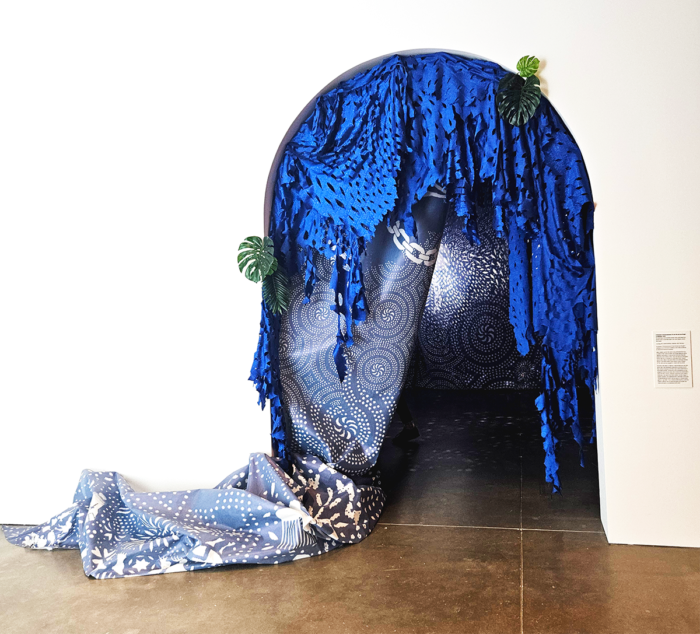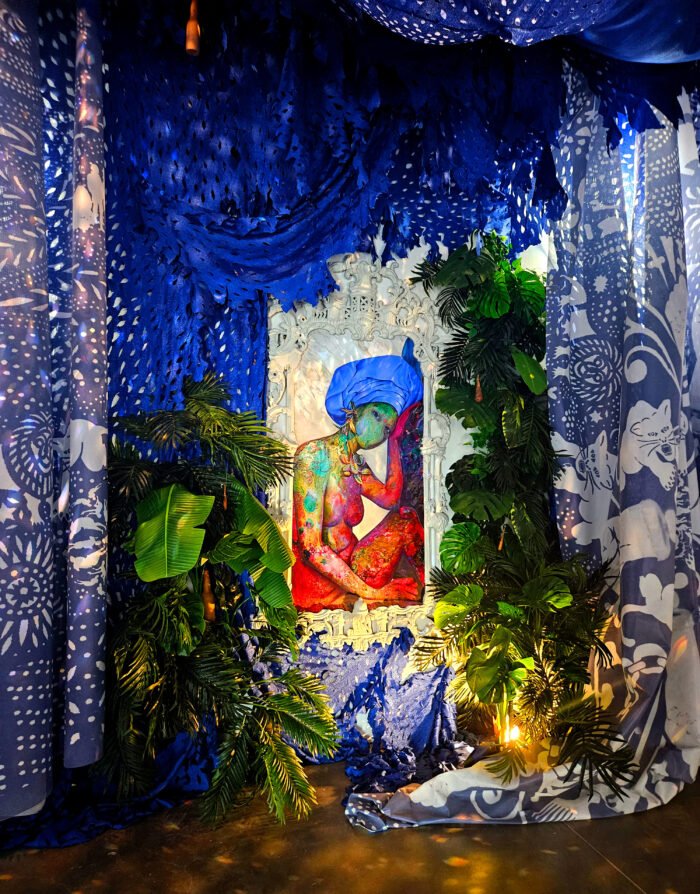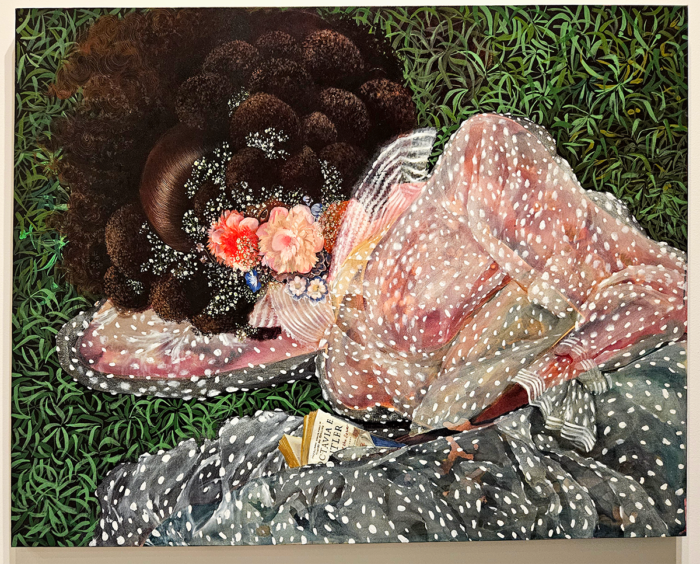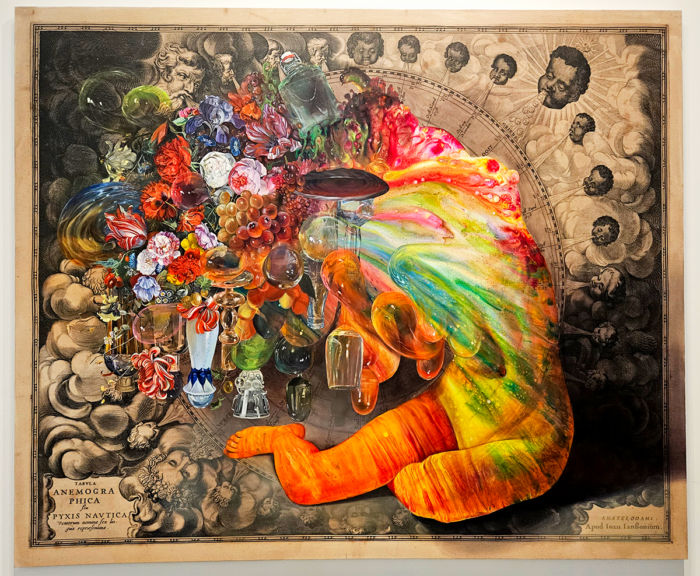When I stepped into Firelei Báez’s exhibition at the ICA in Boston, the word I was fixated on was “biomythography”. A term coined by Audre Lorde to describe her autobiography that captures the idea of mythmaking and alternate history expressed in Báez’s show. While Báez is primarily a painter, her exhibition also incorporated installation and collage.
Báez exhibition is conceptually rich. In many of her works, she uses symbols from Dominican folklore painted over artifacts of colonialism to convey an alternate version of history in which indigenous culture was not subjugated by Europe. Motifs of black liberation are also present in her work. The fabric represented in Baez’s paintings and draped in her installation, A Drexcyen chronocommons (To win the war you fought it sideways), is covered in repeated images of black panthers, hair pics, and other symbols relating to black pride and power.

References to science fiction also play a large role in Báez’s exhibition. The aforementioned installation references the Detroit electronic duo Drexiya and their 1992 album Deep Sea Dweller. The album creates an afro-futurist myth of the Drexians, a deep-sea society formed from the babies of pregnant women who were ejected from transatlantic slave ships. Báez’s installation, itself, is a room draped in a blue tarp with the previously discussed motifs, which evokes both disaster and make-shift shelter. The light placement and filtering through the tarp create a sub-aquatic atmosphere within the installation. Finally, there are 2 portraits of women in the installation. They are both abstracted with oceanic colors and many limbs. Their forms are representative of their growth away from the society that exploited and rejected them. Notably, the women are wearing head wraps that black women were made to wear in New Orleans in the 1700s.
Another salient science fiction reference is present in On rest and resistance, Because we love you (to all those stolen from among us). The painting shows a black woman reclining in a field reading Octavia Butler’s Parable of the Sower. Butler’s novel tells the story of a young black woman living in a dystopian society ravaged by capitalism and wealth disparity. The events of the story begin July 20, 2024: the future when Butler was writing the novel, that has now become our present. The presence of this specific novel in combination with the figure’s restful position expresses relaxation as a radical act in a capitalist society.


L-R Firelei Báez, Drexcyen chronocommons (To win the war you fought it sideways) and Drexcyen chronocommons (To win the war you fought it sideways).
In addition to being conceptually excellent, Báez’s exhibition also showcases her mastery of technique. Painting is the primary medium of the show, and Báez confidently mixes styles. Many of her portraits incorporate both abstract expressionism and realism. Most notably, Báez often paints female figures with abstracted, colorful skin and realistic eyes, or figures whose bodies move from abstraction into realistic representation. One notable technique is paint pouring. Baez uses Yupo paper as a non-porous surface so that she can manipulate the shapes the pouring creates. Untitled (Les tables de géographie réduites en jeu de cartes) is especially notable for it’s use of the pouring technique. Paint swirls and balloons until it begins to form a stampede of horses.

Firelei Báez’s exhibition felt extremely relevant as critical race theory and history are being erased from public spaces. If you are unable to see it at the ICA in Boston before it leaves on September second, the exhibition is traveling to the Vancouver Art Gallery (November second, 2024 to March fourth, 2025) and then the Des Moines Art Center (June 14, 2025 – September 21, 2025).

